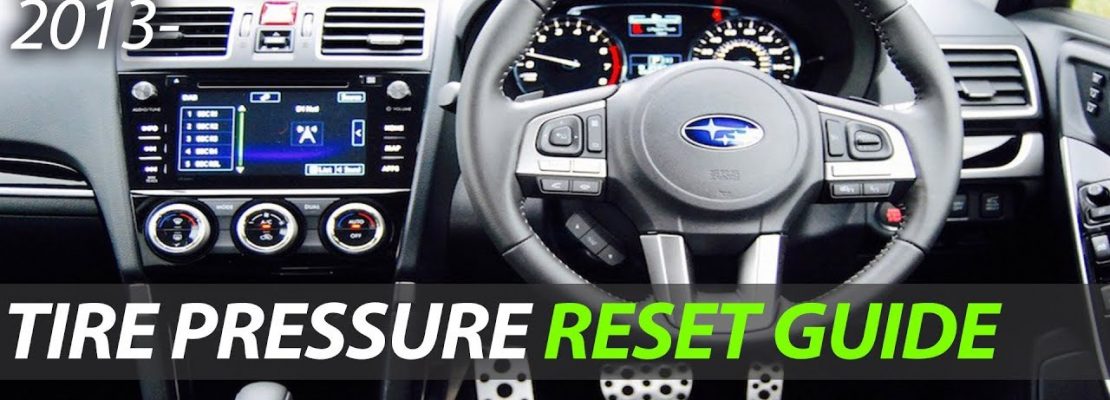The compact crossover SUV Subaru Forester is certainly a joy to drive. The Forester has been part of Subaru’s lineup since its inception in 1997 and is still highly popular today. However, making sure your vehicle is always road ready is essential for you to be able to have a worry-free experience when outdoors. As such, we’re here to help keep your tire pressure in check especially when your TPMS light is illuminated on your Forester’s dashboard.
How to Reset the Tire Pressure System on your Subaru Forester ?
To reset your TPMS light, start with turning the ignition without starting the engine. This should power up the TPMS system. Afterwards, find the [Reset] button on your instrument panel. The reset button is a red circular button located below the TPMS icon. Press this button for about 5 seconds and wait until you hear a “beep” sound. Once you hear the beep, release the button and wait for the notification light to stop blinking. If the reset is complete, there should be a message on your dashboard telling you that it was successful.
When does the TPMS indicator have to be reset?
There are several factors why your TPMS indicator will light up on your Subaru Forester, such as when fitting new tires, changing tire pressure levels, or when the icon is suddenly blinking, or the warning light is on.
If you’ve recently installed brand new tires for your Forester, it’s essential to do a TPMS reset because the new tires will have different air pressure levels than your old tires. Resetting the TPMS is important so that your vehicle’s monitoring system will detect the new tire pressure levels.
The TPMS indicator will also light up when you recently changed your tire pressure levels. While it’s important to have the tire pressure levels updated every now and then, you should only change your PSI by a few notches every time. A big change in PSI levels can cause problems with the TPMS and it may result in an inaccurate reading.
When the TPMS warning light comes on meanwhile, simply do the steps to reset the TPMS light as usual. However, if it comes back on, then there might be an issue with one of your tires. In this case, there could be a problem with the system, so you should have it inspected by a professional.
Lastly, under-inflated tires will also cause your TPMS icon to start blinking. When it does, you should take it to an authorized service center as soon as possible to add air to the tire and wait until the light goes off by itself.
Which Subaru Forester Models have the TPMS button built-in?
The Tire Pressure Monitoring System (TPMS) button is a standard built-in feature across all Forester models from 2013 onwards. Whether you have the base model Forester or the top-of-the-line model, the reset button will be found in the same location. You can always refer to your vehicle owner’s manual if you can’t locate the reset button for some reason.
What’s the recommended tire air pressure for your Subaru Forester?
While an under-inflated tire will set your TPMS icon to light up, it’s just as bad if you overinflate your tires as it can lead to a dangerous ride. Since the Subaru Forester is a compact crossover SUV, it’s best for owners to aim for a tire pressure of around 32 to 45 PSI. You can also refer to your vehicle owner’s manual as well as the conveniently placed sticker on the driver’s side door jamb if you want to follow the recommended tire pressure for your Forester.



